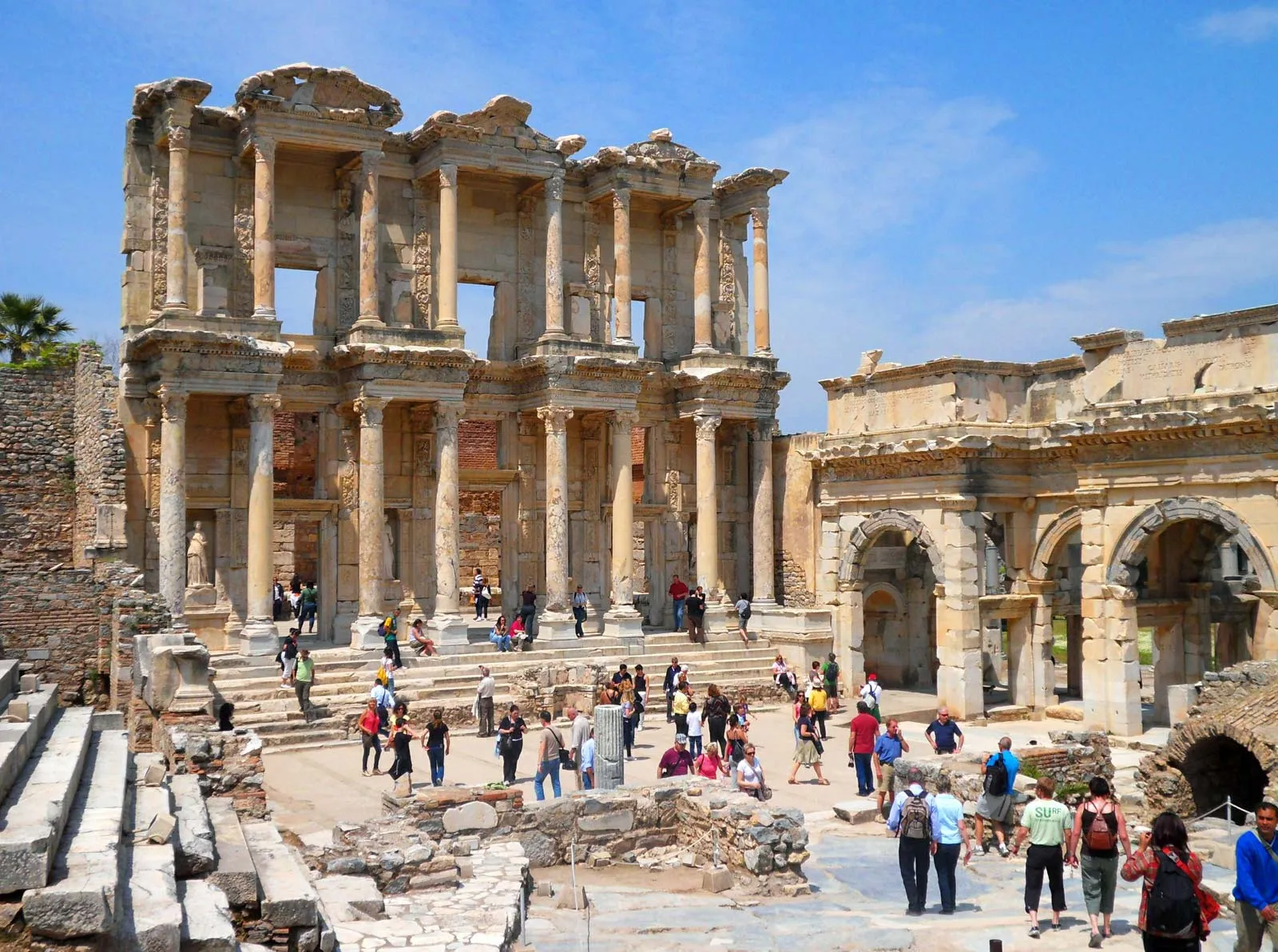From coast to coast, Turkey is overflowing with treasures of the ancient world. From prehistoric settlements to advanced ancient civilizations, Turkey’s vast landscape is a map that takes you on a journey through history. Here, battles were fought that changed to course of history and ruins give us a window into the past. Here is your guide to the ancient wonders you will see when visiting Turkey.
Ephesus
Ephesus is one of the top historical sites in Turkey and sits in a spectacular location on the Aegean Sea. It dates back to the 10th century BCE and the Ionian Greeks turned it into a major trading hub for this key region.
There are several impeccably preserved ruins in this expansive city and the Library of Celsus is the hallmark of ancient archeology. The Temple of Artemis and the Great Theater are also astonishing structures while the captivating Terrace houses show us what daily life in this ancient city would have looked like. The House of the Virgin Mary is an important Christian pilgrimage site as it is believed to be the final resting place for the mother of Jesus.
You can explore Ephesus on your own or book a guided tour to indulge you in more of the hidden secrets of the city. Just remember to take lots of water as there is no running water inside the complex. You should also wear shoes with good grip as some walkways have become slippery after millions of feet crossing the paths. Try to arrive early in the morning to beat the masses who arrive after breakfast.
Troy
Troy is perhaps one of the most famous ancient cities in the world, thanks in large part to Homer’s epic poem, the Iliad. Located in northwestern Turkey, the city is believed to have been founded in the 3rd millennium BCE and was destroyed and rebuilt several times throughout its history. Visitors can explore the remains of the city’s walls, gates, temples, and the legendary Trojan Horse.
Hagia Sophia
Not all of Turkey’s prolific historical sites sit in remote corners of the country. Hagia Sophia is located in Istanbul and is among the most treasured religious structures in the world. It is revered for its immense size and beauty but it is also remarkable for the fact that it is of significance for both Islamic and Christian visitors. Its history stretches back 1,500 years and it was originally built as a Christian cathedral. It was then converted into a mosque under Ottoman rule and later became a museum for both religions. Today it is a mosque once more but visitors can visit outside prayer times to see its awe-inspiring interior for themselves.
Hierapolis
Many visitors come to Pamukkale to see the natural wonder of the travertines. These “cotton clouds” are reason enough to visit but the ancient city of Hieropolis that was built around the white terraces is an incredible archeological site. It was founded in the 2nd century BCE in the Roman period and was a major trading hub but also served as a holiday destination for wealthy Romans who wanted to indulge in the restorative properties of Pamukkale’s healing waters.
The Temple of Apollo and the Necropolis are beautifully preserved but the amphitheater is both impressive in size and detail. You can also take a dip in Cleopatra’s pool. Legend has it that the Empress herself bathed here but that has not been proven. It is, however, one of the only places in the world where you can swim amongst ruins of this caliber, and the pool is littered with columns and building blocks from the city.
Mount Nemrut
Located in southeastern Turkey, Mount Nemrut is a stunning mountain that is home to several ancient ruins and monuments. The mountain is believed to have been a major center of worship during the 1st century BCE and is home to a number of impressive statues and sculptures, including the famous heads of the gods. These statues rival those on Easter Island and 6 gigantic bodies sit atop thrones on the side of the mountain while their heads are displayed at the foot of the mountain.
Pergamon
Pergamon is an ancient city located in western Turkey, near the city of Izmir. The city was founded in the 3rd century BCE and was a major center of learning and culture during the Hellenistic period. Visitors can explore the well-preserved ruins of the city, including the impressive Acropolis, the Library of Pergamum, and the Temple of Trajan. The city is also home to one of the largest ancient theaters in Turkey, which could accommodate up to 10,000 spectators. Visitors can also explore the Asclepion, an ancient medical center where patients would come to seek treatment and healing.







